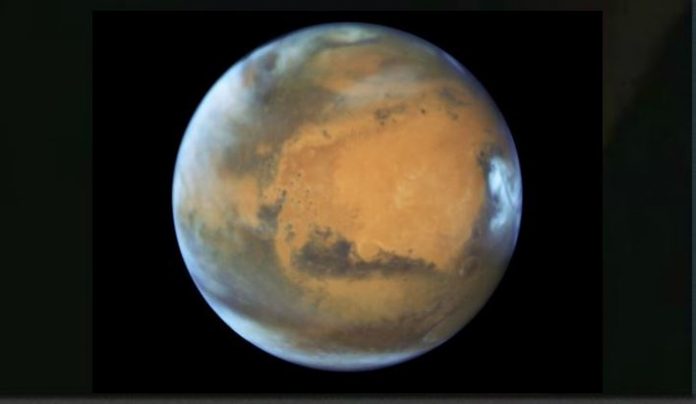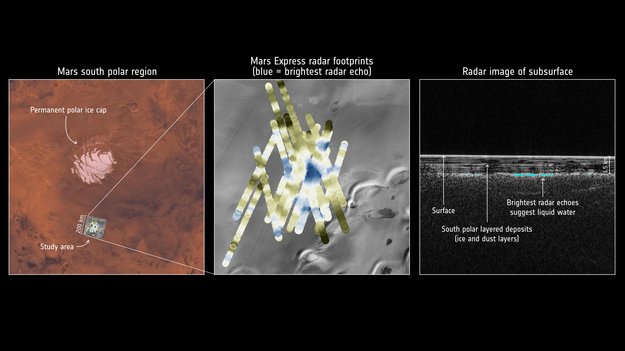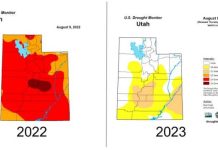
July 26 (UPI) — New radar observations made by the European Space Agency’s Mars Express probe suggest the presence of a small pond of liquid water buried beneath ice and dust near the Red Planet’s south pole.
The radar images offer first conclusive evidence of liquid water on Mars.
That water was once plentiful on Mars is widely accepted by planetary scientists. Researchers have found geological and chemical evidence of its historical presence.
But the Red Planet’s climate has changed significantly over time, and almost all of Mars’ ancient water is now gone. Astronomers agree that the majority of the water that remains on Mars is permanently frozen — but not all.
Scientists have previously identified signs that some water still occasionally exists in liquid form, but hard and conclusive proof has been difficult to find.
Planetary scientists have long suspected that pockets of liquid water could be hiding beneath layers of polar ice. The pressure of all the heavy ice and the presence of salts could sufficiently lower the melting point, scientists surmised.

To prove their theory, scientists have been using the Mars Express probe’s radar instrument MARSIS to collect high-definition images of the south pole’s subsurface layers. The composition of subsurface layers affect the returned radar signal, allowing scientists to map the underground topography.
New data from MARSIS revealed a large layer with heightened reflectivity deep beneath layers of ice and dust.
“This subsurface anomaly on Mars has radar properties matching water or water-rich sediments,” Roberto Orosei, principal investigator of the MARSIS experiment, said in an ESA news release. “This is just one small study area; it is an exciting prospect to think there could be more of these underground pockets of water elsewhere, yet to be discovered.”
Orosei and his colleagues detailed their discovery in a paper published Wednesday in the journal Science.






